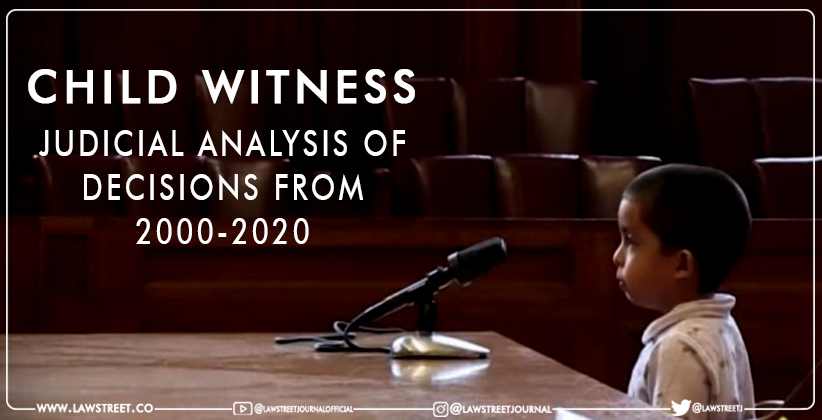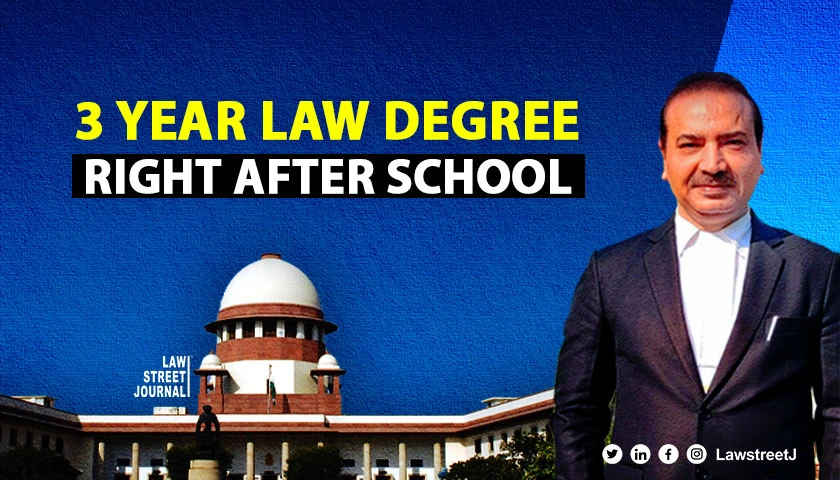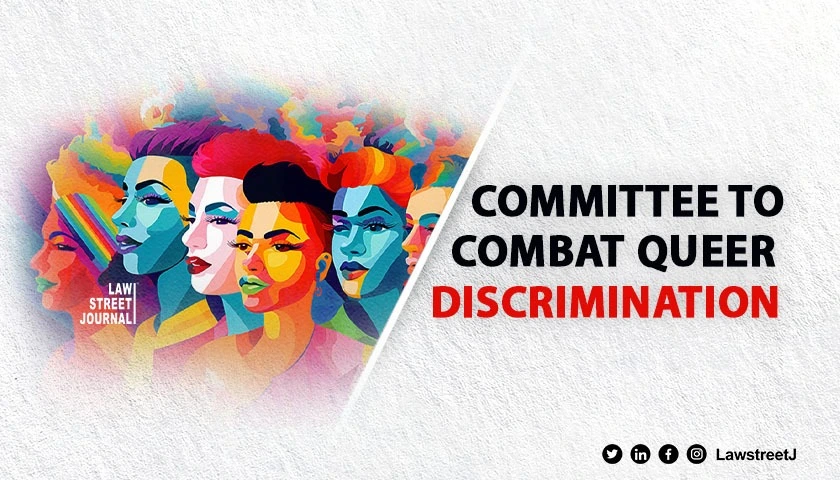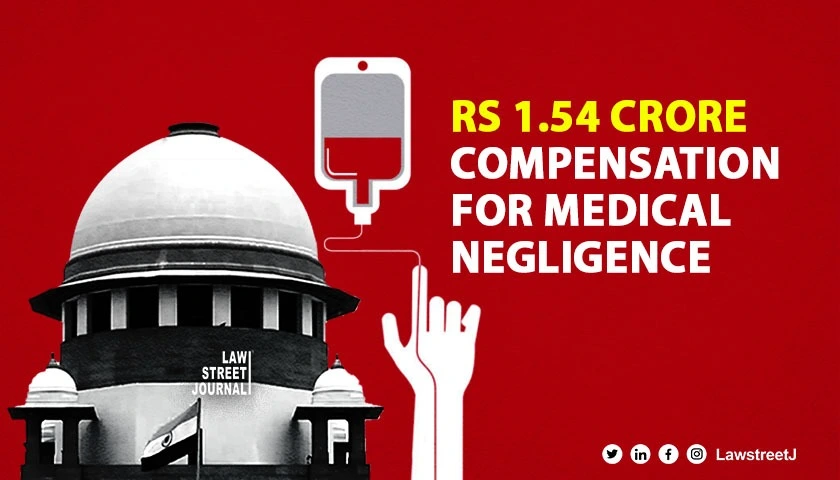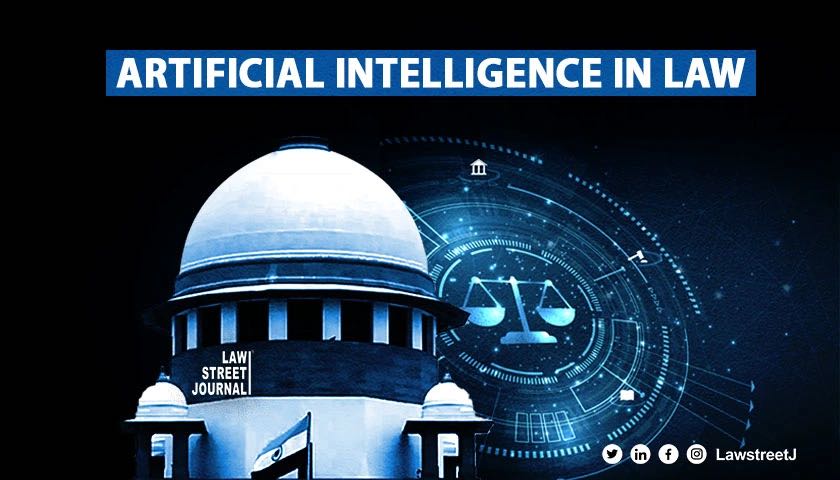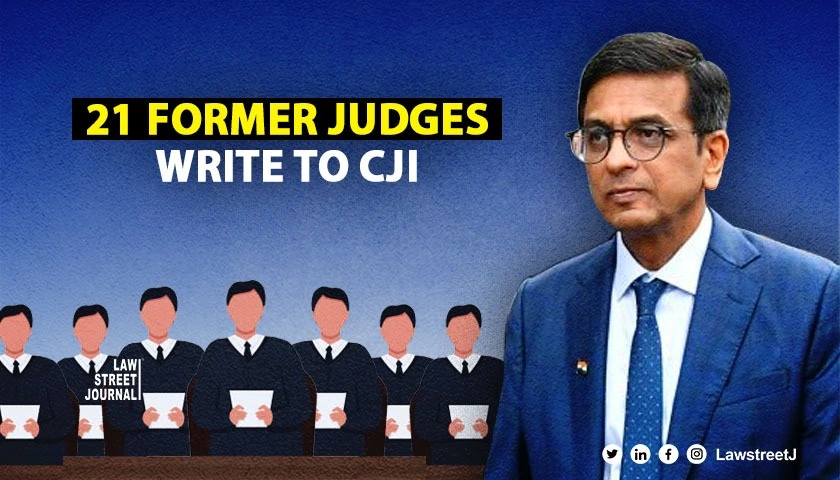1: Person Competent to be Witness:
English Philosopher, Jeremy Bentham has famously said that "witnesses are the eyes and ears of justice”. They are of prime importance in trail of the case and if the witness himself is incapacitated from acting as eyes and ears of justice, the trial gets putrefied and paralysed, and it no longer can constitute a fair trial. [1] The incapacitation may be due to several factors, like the witness being not in a position for reasons beyond control to speak the truth in the court or due to negligence or ignorance or some corrupt collusion [2].
S. 118 [3] of the Evidence Act, 1872 [4] lays down the law as to who may testify [5]. This section does not bar any person to testify unless he is incapable of giving evidence or understanding the question put to him because of tender years, extreme old age, disease or any other cause of the same kind. Thus, no person is particularly declared to be incompetent [6]. The disqualifying factors may be that he is too young a child, or too old a man or is suffering from disease of mind or of body [7].
2: A Case of a Child Witness:
Justice Vivian Bose, writing for the Supreme Court in Rameshwar S/o Kalyan Singh v. State of Rajasthan [8] observed that there is always competency in fact unless the court considers otherwise. Hence, child witness is competent witness under S. 118 provided he has capacity to understand and answer the questions put to her. Cautioning the Judges relying on the child witness, the Privy Council had said in Mohamed Sugal Esa v. The King [9] that as a matter of prudence a conviction should not ordinarily be based on the uncorroborated evidence of a child witness [10]. Elaborating further on the requirement of corroboration, Justice Vivian Bose, further in Para 23 wrote that,
“The rule, which according to the cases has hardened into one of law, is not that corroboration is essential before there can be a conviction but that the necessity of corroboration, as a matter of prudence, except where the circumstances make it safe to dispense with it…The tender years of the child, coupled with other circumstances appearing in the case, such for example, as its demeanour, unlikelihood of tutoring and so forth, may render corroboration unnecessary but that is a question of fact in every case.”
Testimony of child witness is not to be rejected outright, but it is to be scrutinised with greatest caution. [11] The only caution is that rule of rule of prudence must be present to the mind of the judge and there is no rule of practice that there must, in every case, be corroboration before a conviction can be allowed to stand. [12]
In Baby Kandayanathil v State of Kerala [13] the children of the deceased had figured as eye-witnesses and their evidence was recorded after putting to them preliminary questions to satisfy whether they could answer intelligently and fearlessly and they gave all details of occurrence and withstood the test of cross-examination, it was held that their evidence was acceptable. Further, failure to hold preliminary examination to ascertain the level of understanding of a minor child will not introduce a fatal infirmity in his evidence [14].
In State of Maharashtra v. Chandraprakash Kewal Chand Jain [15], the victim of sexual offence was herself child, but the SC pointed out that a woman who is a victim of a sexual assault is not an accomplice to the crime but is a victim of another person's lust and therefore her evidence need not be tested with the same amount of suspicion as that of an accomplice. The Court didn’t put her evidence in the category of a child witness or an accomplice and therefore rejected application of the rule of prudence that her evidence must be corroborated in material particulars and instead asked for looking some evidence which lends assurance.
In Dattu Ramrao Sakhare and Ors. vs. State of Maharashtra [16], the entire prosecution case rested upon the evidence of a child witness aged about 10 years. The SC held that a child witness if found competent to depose to the facts and reliable one such evidence could be the basis of conviction, but it will again depend on upon the circumstances of each case. “The only precaution which the court should bear in mind while assessing the evidence of a child witness is that the witness must be reliable one and his/her demeanour must be like any other competent witness and there is no likelihood of being tutored” the Court held.
Arbind Singh and Krishna Nandan Singh and Ors. vs. State of Bihar [17], the entire case hinged on the evidence of the child witness who was the daughter of the deceased and the accused. The evidence of child was recorded after a gap of 4 years and the Trial Judge hadn’t undertaken a 'voir dire' before recording her evidence on oath. Finding traces of tutoring on certain aspects of her evidence, while acquitting the accused giving him benefit of doubt, the Court held that “implicit faith and reliance cannot be placed on her testimony since it is not corroborated by any independent and reliable evidence.”
3: Position of Judicial Precedents Prior to 2000:
Though being a competent to be witness, the Courts have continuously held that reliance on child witness should be placed with caution, and testimony of child witness should always be corroborated from other evidences.[18] However, holding of preliminary examination to ascertain his understanding of questions put to him is held to be not fatal infirmity.[19] In case child is a victim herself then he/she will not be considered as child witness and requirement of corroboration can be done away with and evidence lending assurance to his/her testimony will suffice [20]. In case of established competency, sole child witness’s testimony is sufficient to convict the accused [21]. Further, traces of tutoring compounded by no corroboration will become ground to disbelieve testimony of child witness and acquit the accused giving him benefit of doubt [22].
4: Method of Analysis of Judicial decisions from 2000-2020:
The purpose of this paper is to assemble a qualitative compilation of cases in which case was involving child witness or dependant on child witness from 2000 to 2020. Before Author presents findings, it will be apposite to offer the following methodological explanation and disclaimer as to the nature of the report and the process adopted in assembling these cases.
First, Author has surveyed only the SC Judgements for twin reasons. One reason being the nature of Criminal Law, where much reliance is placed on the precedential value of Judgements coming from the SC. As regards to the High Court [23] judgements, Judgement of one HC is not binding on another HC.Another reasoning being the short nature of research that is adopted and hopefully the trends uncovered from the empirical data in this report will serve as a preliminary step towards a wholistic and comprehensive empirical analysis of treatment being given to testimony of child witness by Various Indian Courts which will include HCs of various states.
Second, in assembling these cases, Author has relied on research database “Manupatra” since it was not feasible to rely on the individual website of the Supreme Court. Manu Search [24] with word “child witness” gave 93 results and Legal Search [25] with S. 118 of the Act and further search with word “child witness” gave 14 results. Purpose of using the results derived from Legal Search was to assemble a collection of cases that qualitatively discussed and applied the law under S. 118 of the Act to child witness. With this goal in mind, Author has excluded the additional cases which appeared through Manu Search in which phrase “child witness” merely appeared without there being any legal discussion by the Court.
5: Analysis of the Judgements:
5.1: Empirical Analysis:
| Sr. No. | Case Name | Type of Witness | Reason of Accepting/Rejecting Testimony of Child Witness |
| 1 | Ratansinh Dalsukhbhai Nayak vs. State of Gujarat [26] | Entire Conviction based on sole testimony of Child witness | The Court found that there was no reason as to why child witness would falsely implicate accused. Further, other evidences supported her testimony fulfilling requirement of corroboration. |
| 2 | Acharaparambath Pradeepan and Ors. vs. State of Kerala [27] | 4 child witnesses as main eye witness | There were four child witnesses C1, C2, C3 and C4 and seven accused A1, A2, A3, A4, A5, A6 and A7. In test identification parade, C1 had identified A1, A3, A6, A4 and A7, C2 was able to identify only A1 and A5, C3 identified A1, A2, A3, A4, A6 and A7 and C4 identified A1, A4 and A5. Finding child witnesses’ reaction to the event not entirely identical but only natural and hence discarding argument of tutoring (if that were to be so, they would have all identified the accused), the Court held that Testimony of C3 was corroborated by C1, C2 and C3 and convicted all accused. |
| 3 | Nivrutti Pandurang Kokate and Ors. vs. State of Maharashtra [28] | Child witness as main eye witness | Other evidences supported child witness's testimony fulfilling requirement of corroboration. |
| 4 | Golla Yelugu Govindu vs. State of Andhra Pradesh [29] | 2 child witnesses as main eye witness | Child witnesses were children of deceased and accused and there was no reason as to why would they implicate their father/accused. Testimony of child witnesses was corroborated by two other witnesses. |
| 5 | Virendra and Ors. vs. State of U.P. [30] | Child witness one of the two witnesses. | Testimony of Child Witness used by the prosecution only to the extent that the same corroborated the evidence led by the prosecution through adult witness/complaint and was also in conformity with the medical evidence. |
| 6 | State of Karnataka vs. Shantappa Madivalappa Galapuji and Ors. [31] | Child witness among the many witnesses | child witness was son of the deceased and complaint was brother of the deceased (also uncle of child witness). High Court had rejected testimony of child witness on the "presumption" of tutoring by complaint. after observing that the Session Judge had ascertained his ability to understand questions and his awareness about his duty to speak truth before the Court, the SC remanded matter back to HC. |
| 7 | Himmat Sukhadeo Wahurwagh and Ors. vs. State of Maharashtra [32] | Two child witness among the many witnesses | The Court found that while deposing, the child witness was aware of what had happened in the answers given by him in the course of his evidence which clearly proved that he was a competent witness. Further, regarding corroboration, the Court found that his statement had been duly corroborated by the dying declaration made by one of the deceased to another witness who had rushed to the spot on being informed by child witness as to what had happened. |
| 8 | State of M.P. vs. Ramesh and Ors. [33] | Child witness among the many witnesses | The court observed that the statement of child witness got affirmed by the circumstances of the incident, facts, from the activities of the other witnesses carried out by them on reaching at the place of occurrence and from the medical evidence. |
| 9 | K. Venkateshwarlu vs. The State of Andhra Pradesh [34] | 4 child witnesses as main eye witness | Statements of the child witnesses were recorded under Section 164 of the Code, but in they were kept by the police in police station prior to giving evidence, hence the Court refused rely upon holding that there was intrinsic evidence to show that all these witnesses were under the pressure of the police. Further, the Court held that once this was established, the inevitable conclusion that they were tutored by the police must follow. Additionally, medical evidence also didn’t support the case of prosecution. |
| 10 | Hamza vs. Muhammadkutty and Ors. [35] | Entire Conviction based on sole testimony of Child witness | Holding that, in the absence of any corroboration of the testimony of child witness, his oral evidence did not inspire confidence and it was not prudent for the Court to convict the accused on the sole uncorroborated testimony of child witness. |
| 11 | State of Rajasthan vs. Chandagiram [36] | Two child witness among the many witnesses | The Court found that child witnesses' version was natural and there was nothing to suspect their version in narrating the occurrence. It was further corroborated from other evidences. |
| 12 | Gul Singh vs. State of M.P. [37] | Child witness among the many witnesses | Finding the testimony of child witness reliable and not tutored and also corroborated by other witnesses, the Court taking cumulative reading of evidences, convicted accused. |
| 13 | Digamber Vaishnav and Ors. vs. State of Chhattisgarh [38] | Prosection case mainly dependent on Child witness | Child witness was not eye witness and her evidence were fraught with inconsistencies. Further, when she informer about the crime to one of the other witnesses for the first time, she had not disclosed name of the accused. Further none of the witnesses had corroborated her testimony, hence the Court refused to rely on her evidence. |
| 14 | P. Ramesh v. State of Tamil Nadu [39] | Two child witness among the many witnesses | Child witnesses were children of deceased and accused. When the trial judge posed certain initial queries to both the child witnesses to assess whether they were capable of deposing in evidence, they answered preliminary questions and also stated that they had come to depose in evidence about the circumstances leading to the death of their mother, but they could not answer as to before whom they were standing in the Court i.e. they could not say who the judge and lawyers were. Holding them incapable to depose evidence, the Trial Court had not recorded their evidence. The High Court had remanded back the case back to the Trial Court with direction to examine both child witnesses after objectively ascertaining their capacity to depose. The SC upheld the judgement of the HC. |
5.2: Qualitative Analysis:
(a): Regarding Competency of Child Witness:
Ratansinh Dalsukhbhai Nayak (supra) is considered to be a landmark judgement as almost all the case decided after it have relied on it when it comes ascertaining competence of child witness to testify. The Court has called child witness to be “dangerous witness” pliable and liable to be influenced easily, shake and moulded, but also held that in case after careful scrutiny, there is an impress of truth in her testimony, there will be no obstacle in the way of accepting the evidence of a child witness. In Golla Yelugu Govindu (supra) the SC asked for only precaution that the witness must be a reliable one and his/her demeanour must be like any other competent witness and there is no likelihood of being tutored and assertion of possession or lack of intelligence and his manners will primarily test with the Trial Judge.
While Ratansinh Dalsukhbhai Nayak (supra) and Golla Yelugu Govindu (supra), the Court found no reason as to why child witness would falsely implicate accused, in Acharaparambath Pradeepan (supra) the SC held that “the mind of a child would be very clear and they would have no animosity to implicate an innocent man and hence their evidence can be relied upon”. In Himmat Sukhadeo Wahurwagh (supra), the child witness’s awareness as to what incident had happened had weighed in towards proving his competency to be witness.
In Ramesh and Ors (supra), the SC reiterating what was held in State of U.P. v. Krishna Master and Ors. [40], observed as follows in Para 11:
“[..] there is no principle of law that it is inconceivable that a child of tender age would not be able to recapitulate the facts in his memory. A child is always receptive to abnormal events which take place in his life and would never forget those events for the rest of his life. The child may be able to recapitulate carefully and exactly when asked about the same in the future. In case the child explains the relevant events of the crime without improvements or embellishments, and the same inspire confidence of the Court, his deposition does not require any corroboration whatsoever. The child at a tender age is incapable of having any malice or ill will against any person. Therefore, there must be something on record to satisfy the Court that something had gone wrong between the date of incident and recording evidence of the child witness due to which the witness wanted to implicate the accused falsely in a case of a serious nature.”
In Virendra and Ors. (supra), the Court held that the Trial Court would not be justified in rejecting testimony of child witness totally and it can be relied upon the extent it is corroborated by other witnesses.
In P. Ramesh (supra), the Trial Judge had rejected testimony of child witnesses just because they could not identify who the Judge and Lawyers were. Justice DY Chandrachud, writing for the Bench and reiterating entire law developed around child witness, observed that “the Trial Judge was required to determine was whether the children were in a fit and competent state of mind to depose and were able to understand the purpose for being present on the occasion”. This was so as both the child witnesses were aware that they had come to depose about the circumstances leading to the death of their mother.
(b): Regarding Administering Oath Prior to Recording Evidence:
In Golla Yelugu Govindu (supra) the SC observed that even in the absence of oath the evidence of a child witness can be considered under S. 118 of the Act provided that such witness is able to understand the answers thereof. Further in Virendra and Ors. (supra), the Trial Court had held that child witness was not reliable as she didn’t understand the meaning of “oath/shapath”. The High Court was compelled to observe that child witness might not be in a position to understand the significance of oath but the Trial Court should have satisfied itself if she understood the significance of desirability of speaking the truth.
(c): Regarding Possibility of Tutoring to Child Witness:
In Ratansinh Dalsukhbhai Nayak (supra), the Court mandated to observe precaution as child witnesses are amenable to tutoring and often live in a world of make beliefs. Observing that the child witness was cross-examined at length and in spite thereof she had described in detail the scenario implicating the accused to be author of the crime. The Court also observed that the answers given by the child witness were suggesting she was only repeating what somebody else asked her to say. But rejecting the argument of tutoring, the Court observed that the mere fact that the child was asked to say about the occurrence and as to what she saw, is no reason to jump to a conclusion that it amounted to tutoring and that she was deposing only as per tutoring what was not otherwise what she actually saw.
Interestingly in Acharaparambath Pradeepan(supra), there were many child witnesses and many accused, not all child witness could identify all accused. Finding it natural, the Court held that had it been tutored, they all would have identified all the accused. In this case, their testimony was emboldened by the corroboration of each child witness’s testimony by other child witnesses.
In Shantappa Madivalappa Galapuji (supra), it was argued that child witness was tutored as complaint was his uncle. But the Trial Judge ascertain that child witness knew the difference between the truth and the falsehood and knew that only truth has to be deposed before the Court. He also knew the consequences of deposing falsely. Awareness about duty to speak truth before the Court can serve two purpose, one being his competency to testify before the Court and second being nullification of the argument of tutoring.
In Ramesh and Ors. (supra), accepting the argument that the evidence of a child witness must be evaluated more carefully with greater circumspection because he is susceptible to tutoring, the Court observed that when it is found that testimony of child witness is tutored and if there is a possibility of separating tutored part from untutored part, then such remaining untutored part can inspire confidence of the Court. Here rather than finding the corroboration for this untutored part, the Court asked that this untutored part can be used for/taken into consideration for the purpose of corroboration as in the case of a hostile witness.
6: Conclusion:
There is no much different in the law during 2000 to 2019 when it comes to accepting testimony of child witness and competency of child witness to depose before the Court. His ability to understand questions and awareness about the duty to speak truth before the Court goes towards his competency to be witness. Though S. 118 of the Act doesn’t ask for corroboration of evidence of child witness, requirement of corroborate is developed through case law not as a rule of law but as a rule of prudence. In some of the cases, testimony of an only child witness is also sufficient to cause conviction of an accused, provided his testimony is not tutored.
Author: Parth Thummar
2nd year LL.B. (Hons.) in IPR at Rajiv Gandhi School of Intellectual Property Law, IIT Kharagpur
[1] Zahira Habibullah Sheikh v. State of Gujarat AIR 2006 SC 1367.
[2] Ibid.
[3] S. 118. Who may testify. –– All persons shall be competent to testify unless the Court considers that they are prevented from understanding the questions put to them, or from giving rational answers to those questions, by tender years, extreme old age, disease, whether of body or mind, or any other cause of the same kind.
Explanation. –– A lunatic is not incompetent to testify, unless he is prevented by his lunacy from understanding the questions put to him and giving rational answers to them.
[4] Hereinafter, the Act.
[5] S. 118 falls into the Chapter IX (S. 118 – 134) of the Act. This chapter talks about who can testify as a witness, how can one testify, what statements will be considered as testimony, and so on.
[6] Rameshwar S/o Kalyan Singh v. State of Rajasthan AIR 1952 SC 54.
[7] Interestingly, even a lunatic is not declared to be incompetent unless his lunacy prevents him from understanding or answering questions.
[8] AIR 1952 SC 54.
[9] AIR 1946 PC.
[10] In England where provision has been made for the reception of unsworn evidence from a child it has always been provided that the evidence must be corroborated in some material particular implicating the accused. But in the Indian Act there is no such provision and the evidence is made admissible whether corroborated or not. Once there is admissible evidence a Court can act upon it; corroboration, unless required by statute, goes only to the weight and value of the evidence.
[11] State of Bihar v Kapil Singh AIR 1969 SC 53.
[12] Supra note 6.
[13] AIR 1993 SC 2275.
[14] Panchhi & National Commission for Women v State of UP, AIR 1998 SC 2726
[15] AIR 1990 SC 658. This was again reiterated in Karnel Singh vs. State of M.P. AIR 1995 SC 2472.
[16] (1997)5SCC340.
[17] AIR 1994 SC 1068.
[18] Supra note 8 and 9.
[19] Supra note 14.
[20] Supra note 15.
[21] Supra note 16.
[22] Supra note 17.
[23] Hereinafter the HC.
[24] This search interface gives the single search box experience and assists one to search for key words, phrases, multiple phrases and more. If one gives search query “child witness”, then it will look for all the documents available in containing phrase “child witness” anywhere in the document.
[25] As the case laws in Manupatra are divided into fields, this search interface allows to search on a specific field or a combination of fields where each field contains a specific information (e.g., appellant/respondent name, judges name, equivalent citation, subject, judge name, citation, acts, rules, order etc). Legal search allows you to search on a specific field or a combination of fields. If one gives search query, for “the Indian Evidence Act, 1872” with Section 118, it will show all the documents which care classified by one of the fields as “Section 118 of the Indian Evidence Act, 1872”.
[26]AIR 2004 SC 23.
[27](2006) 13 SCC 643.
[28]AIR 2008 SC 1460.
[29]AIR 2008 SC 1842.
[30](2008) 16 SCC 582.
[31]AIR 2009 SC 2144.
[32]AIR 2009 SC 2292.
[33](2011) 4 SCC 786.
[34] AIR 2012 SC 2955.
[35] AIR 2013 SC 3173.
[36]2014 (10) SCALE 352.
[37]2014 (10) SCALE 620.
[38] AIR 2019 SC 1367.
[39] AIR 2019 SC 3559.
[40] AIR 2010 SC 3071
